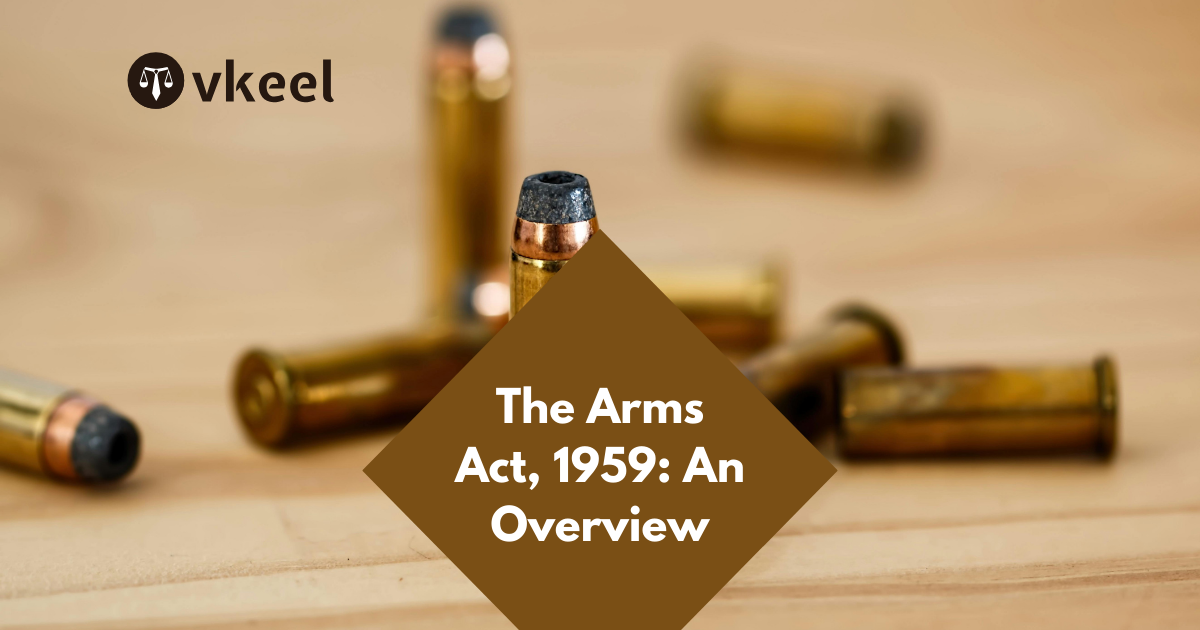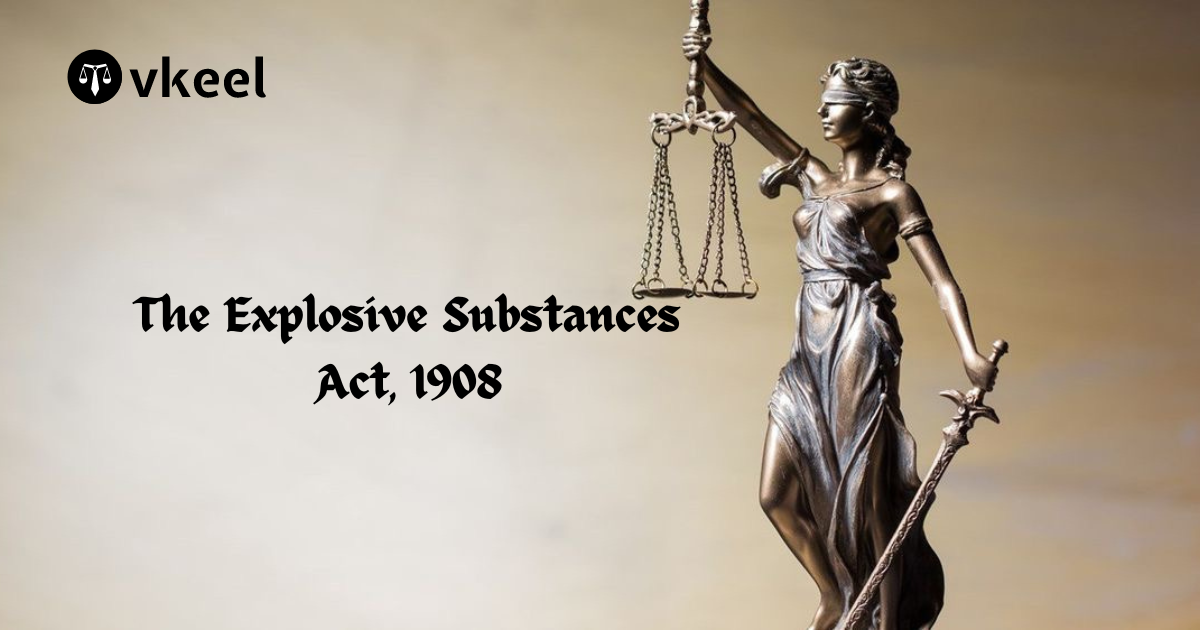The Arms Act, 1959: An Overview
By Himanshu Kumar
Table of Contents
Introduction
The Arms Act of 1959 is a pivotal piece of legislation in India, formulated to regulate the acquisition, possession, manufacture, sale, transportation, import, and export of arms and ammunition. It was enacted to curb the proliferation of illegal arms and to ensure that only individuals meeting specific criteria could legally own weapons
Under Indian law, particularly as defined in the Arms Act of 1959, “arms” encompasses a broad range of instruments designed to inflict harm or damage. According to the Act, arms include firearms, sharp-edged and other deadly weapons, and all types of projectiles and explosive materials, whether they are capable of being used as weapons or not. Firearms are further categorized into rifles, pistols, shotguns, and other devices capable of discharging bullets or projectiles through explosive force. The Act also covers parts of firearms, machinery for manufacturing arms, and ammunition, which includes cartridges, shells, and other explosive substances used in conjunction with firearms.
The definition is purposefully broad to cover various instruments that could potentially be used to cause physical harm. This inclusivity ensures comprehensive regulation, preventing unauthorized manufacturing, possession, and use of dangerous weapons. The law also provides for certain exceptions and exemptions, such as arms used for agricultural purposes, which are regulated differently. This wide-ranging definition underlines the government’s intent to maintain public safety and order while allowing for legitimate use of arms for self-defense, sports, and other lawful activities under a regulated framework.
.This article provides a detailed examination of the Arms Act, 1959, including its provisions, amendments, and significant case laws that have shaped its interpretation and implementation.
Historical Background
The Arms Act of 1959 was enacted in India to regulate and control the acquisition, possession, and carrying of firearms and ammunition. The historical backdrop of this legislation can be traced back to the British colonial era, particularly to the Indian Arms Act of 1878. The 1878 Act was implemented following the 1857 Indian Rebellion, during which the British faced significant resistance from Indian freedom fighters. To prevent future uprisings and ensure colonial dominance, the British introduced stringent controls on arms possession, effectively disarming the general populace while granting exceptions primarily to British officials and loyalists. This discriminatory legislation created widespread resentment and was seen as a tool of oppression.
After gaining independence in 1947, India inherited the colonial-era arms regulations. Recognizing the need to replace these archaic laws with a framework suitable for a sovereign nation, the Indian government introduced the Arms Act of 1959. This new legislation aimed to balance the necessity of maintaining public order and security with the rights of individuals to possess arms for self-defense and other lawful purposes. The Act introduced a more comprehensive and transparent system of licensing, regulation, and penalties to ensure that firearms did not fall into the wrong hands while still allowing law-abiding citizens to legally acquire and own arms under regulated conditions.
Key Provisions of the Arms Act, 1959
The Arms Act, 1959, is divided into six chapters, encompassing 45 sections, each dealing with different aspects of arms regulation. Here are the key provisions:
Chapter I: Preliminary
- Section 1: This section provides the short title, extent, and commencement of the Act.
- Section 2: It defines various terms used within the Act, such as “arms,” “ammunition,” “license,” and “prohibited arms.”
Chapter II: Acquisition, Possession, Manufacture, Sale, Import, Export, and Transport of Arms and Ammunition
- Section 3: It restricts the acquisition, possession, or carrying of firearms without a valid license.
- Section 4: Addresses the acquisition, possession, and carrying of prohibited arms or ammunition.
- Section 5: Prohibits the manufacture, sale, or transfer of firearms without a license.
- Section 6: Regulates the import and export of arms and ammunition.
- Section 7: Prohibits the use, sale, transfer, conversion, repair, test, or proof of prohibited arms or ammunition.
Chapter III: Provisions Relating to Licenses
- Section 13: Describes the process for obtaining a license, including application and authorities’ powers to grant or refuse licenses.
- Section 14: Specifies the conditions under which a license can be refused.
- Section 15: Discusses the duration and renewal of licenses.
Chapter IV: Powers and Procedures
- Section 19: Grants powers to search and seizure of arms without a warrant under certain conditions.
- Section 20: Provides the authorities the power to confiscate arms and ammunition.
Chapter V: Offences and Penalties
- Section 25: Lists the penalties for various offenses, such as possessing a firearm without a license or contravening the Act’s provisions.
- Section 27: Specifies enhanced penalties for using arms in contravention of the Act, leading to death or injury.
Chapter VI: Miscellaneous
- Section 44: Empowers the central government to make rules for carrying out the purposes of the Act.
Amendments to the Arms Act
Over the years, the Arms Act, 1959, has undergone several amendments to address emerging issues and challenges:
- The Arms (Amendment) Act, 1983: This amendment introduced more stringent penalties for illegal arms trade and possession. It also included provisions to combat the rise in the use of illegal arms by terrorist and anti-social elements.
- The Arms (Amendment) Act, 2010: This amendment aimed to tighten the regulation of firearms, particularly focusing on the increasing misuse of licensed firearms. It introduced stricter criteria for granting licenses and enhanced the punishment for violations.
- The Arms (Amendment) Act, 2019: One of the most recent amendments, it reduced the number of firearms that an individual can own from three to two. It also introduced harsher penalties for offenses such as illegal trafficking of firearms and possession of prohibited arms.
Notable Case Laws
Several landmark judgments have interpreted and clarified the provisions of the Arms Act, 1959. Some significant case laws include:
1. State of Punjab v. Balwant Singh (1987)
In this case, the Supreme Court of India dealt with the interpretation of “prohibited arms.” The accused was found in possession of a weapon without a license. The Court held that possession of even a single cartridge without a proper license constitutes an offense under the Act. This case underscored the strict liability nature of the Act concerning unlicensed possession of arms and ammunition.
2. Gunwantlal v. State of Madhya Pradesh (1972)
This case is significant for its interpretation of the term “possession.” The Supreme Court held that mere physical control over a weapon does not amount to possession under the Act. There must be animus possidendi, i.e., intent to possess the weapon. This ruling highlighted the importance of the intention behind possession, not just the physical control.
3. Sanjay Dutt v. State through CBI (1994)
This case, popularly known as the Bombay Blast Case, involved the actor Sanjay Dutt who was charged under the Arms Act for possessing prohibited weapons. The Supreme Court’s interpretation emphasized that an accused must prove that they possessed the arms for a lawful purpose. This case highlighted the stringent nature of the Act and the onus on the accused to justify possession.
Impact and Challenges
The Arms Act, 1959, has had a significant impact on regulating firearms in India. It has been instrumental in curbing the illegal possession and use of arms. However, several challenges persist:
- Illegal Arms Trade: Despite stringent laws, the illegal arms trade continues to thrive. Cross-border smuggling and local manufacturing of illegal arms pose significant challenges.
- Licensing Issues: The process of obtaining a license can be cumbersome and is often criticized for being opaque and corrupt. Genuine applicants sometimes face undue hardships, while individuals with influence manage to bypass regulations.
- Enforcement: Effective enforcement of the Act remains a challenge due to inadequate resources and corruption within law enforcement agencies. Regular training and stricter oversight are needed to address these issues.
Conclusion
The Arms Act, 1959, is a crucial piece of legislation aimed at controlling the proliferation and misuse of firearms in India. Over the years, it has evolved to address new challenges and threats, particularly those posed by illegal arms trade and terrorism. Significant case laws have shaped its interpretation, ensuring that the Act is applied rigorously to deter illegal possession and use of firearms.
Despite its stringent provisions, effective enforcement remains a critical area that requires continuous improvement. Ensuring transparency in the licensing process, strengthening border controls to curb smuggling, and enhancing the capabilities of law enforcement agencies are essential steps towards achieving the objectives of the Arms Act, 1959. As India continues to modernize, the Act must evolve to address emerging threats and ensure that the regulation of arms and ammunition keeps pace with the changing dynamics of society and security.
Disclaimer:
The information provided in the article is for general informational purposes only, and is not intended to constitute legal advice or to be relied upon as a substitute for legal advice. Furthermore, any information contained in the article is not guaranteed to be current, complete or accurate. If you require legal advice or representation, you should contact an attorney or law firm directly. We are not responsible for any damages resulting from any reliance on the content of this website.







